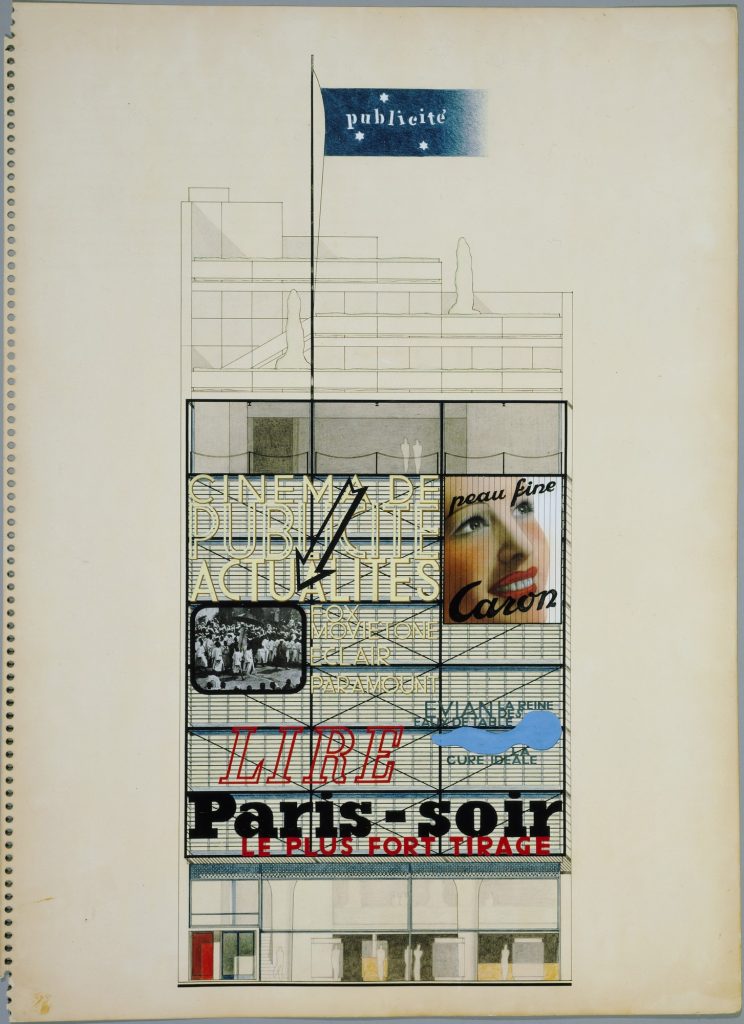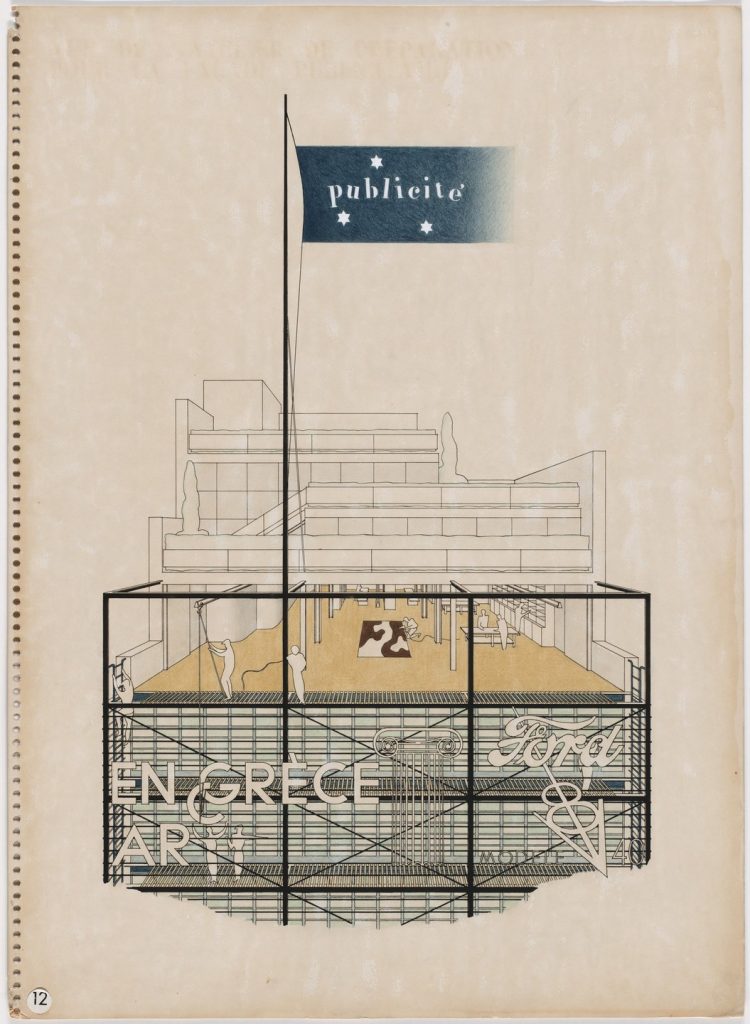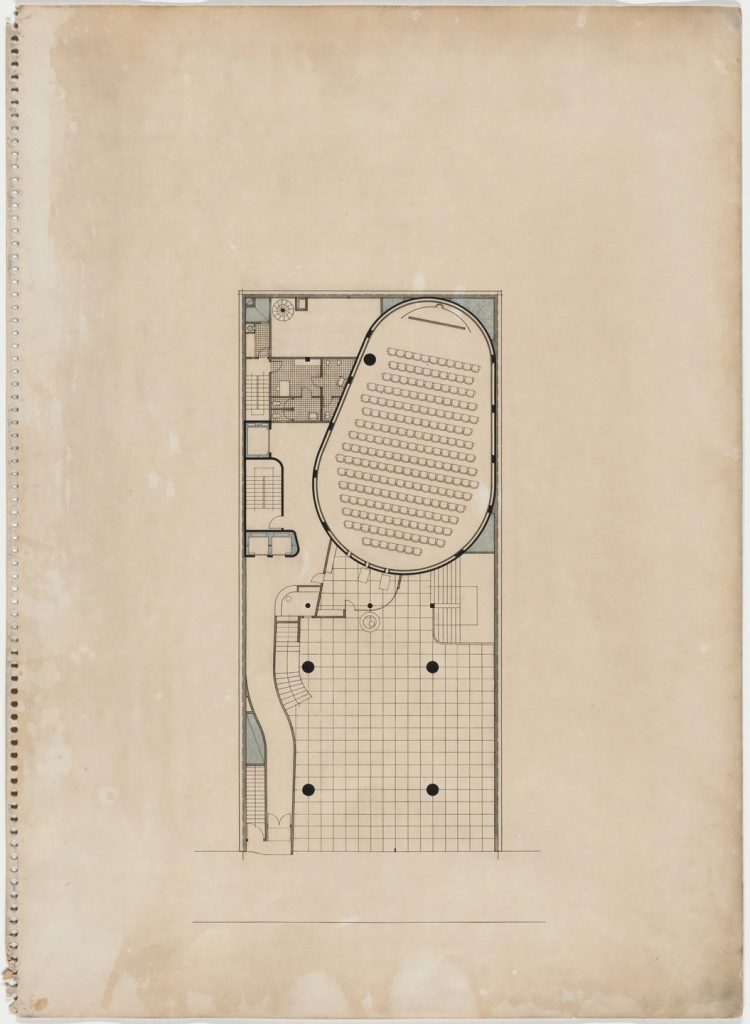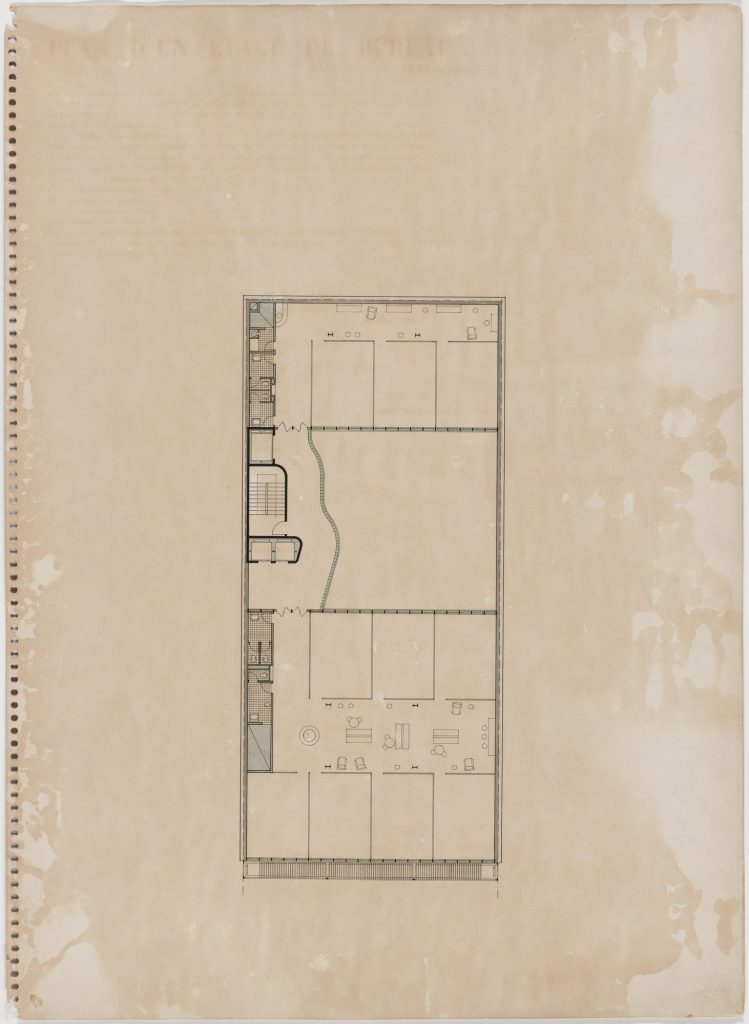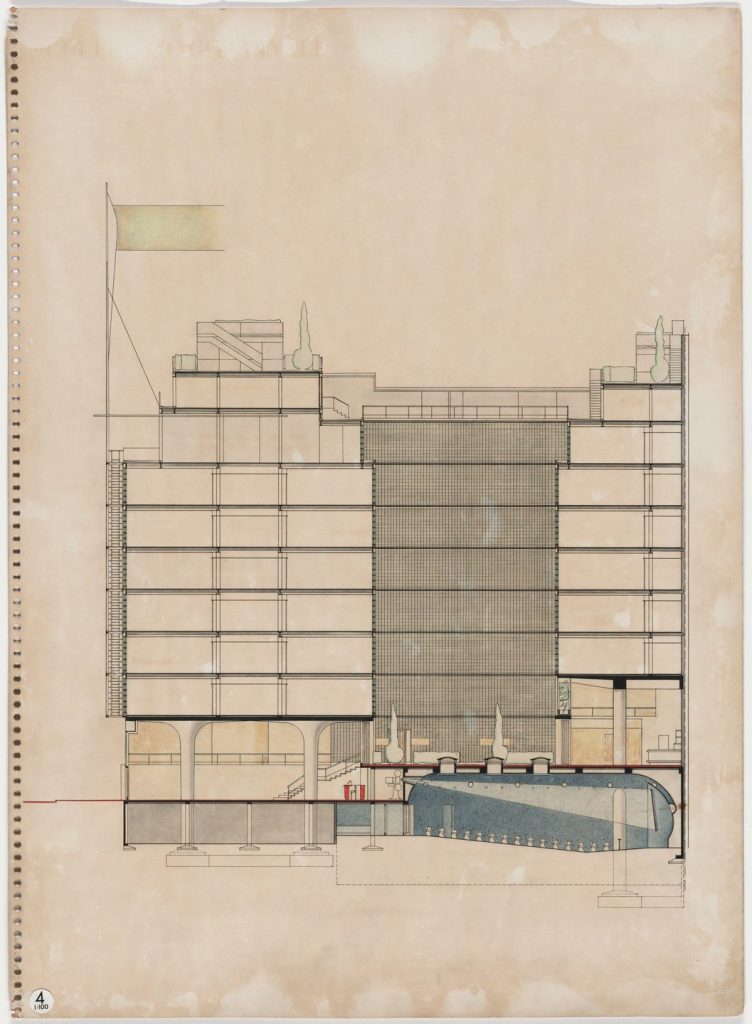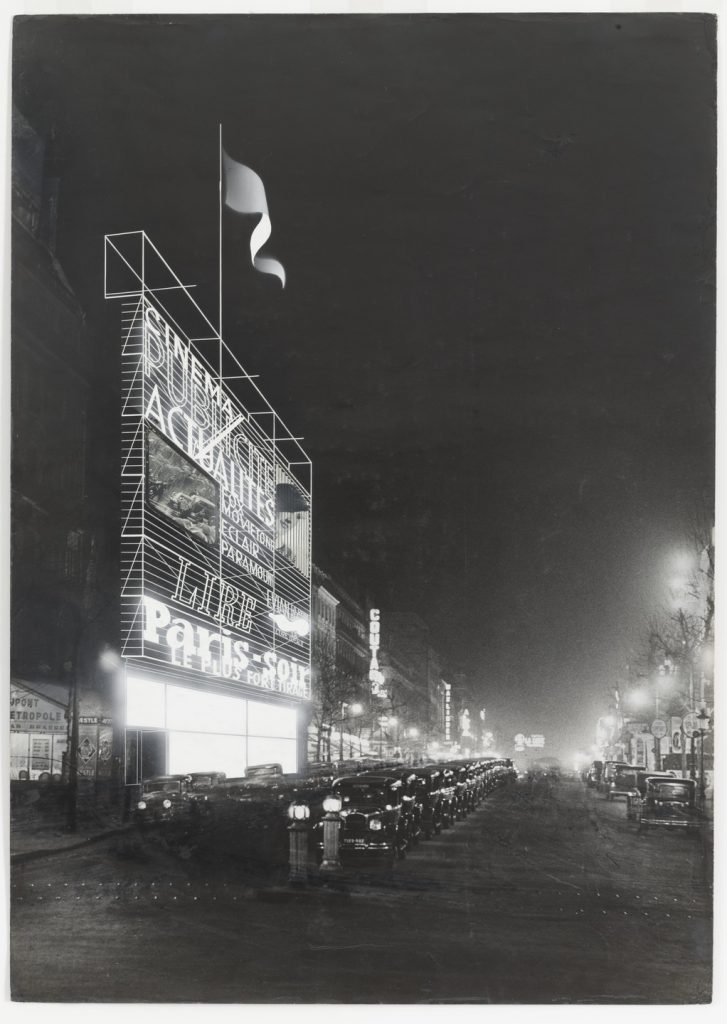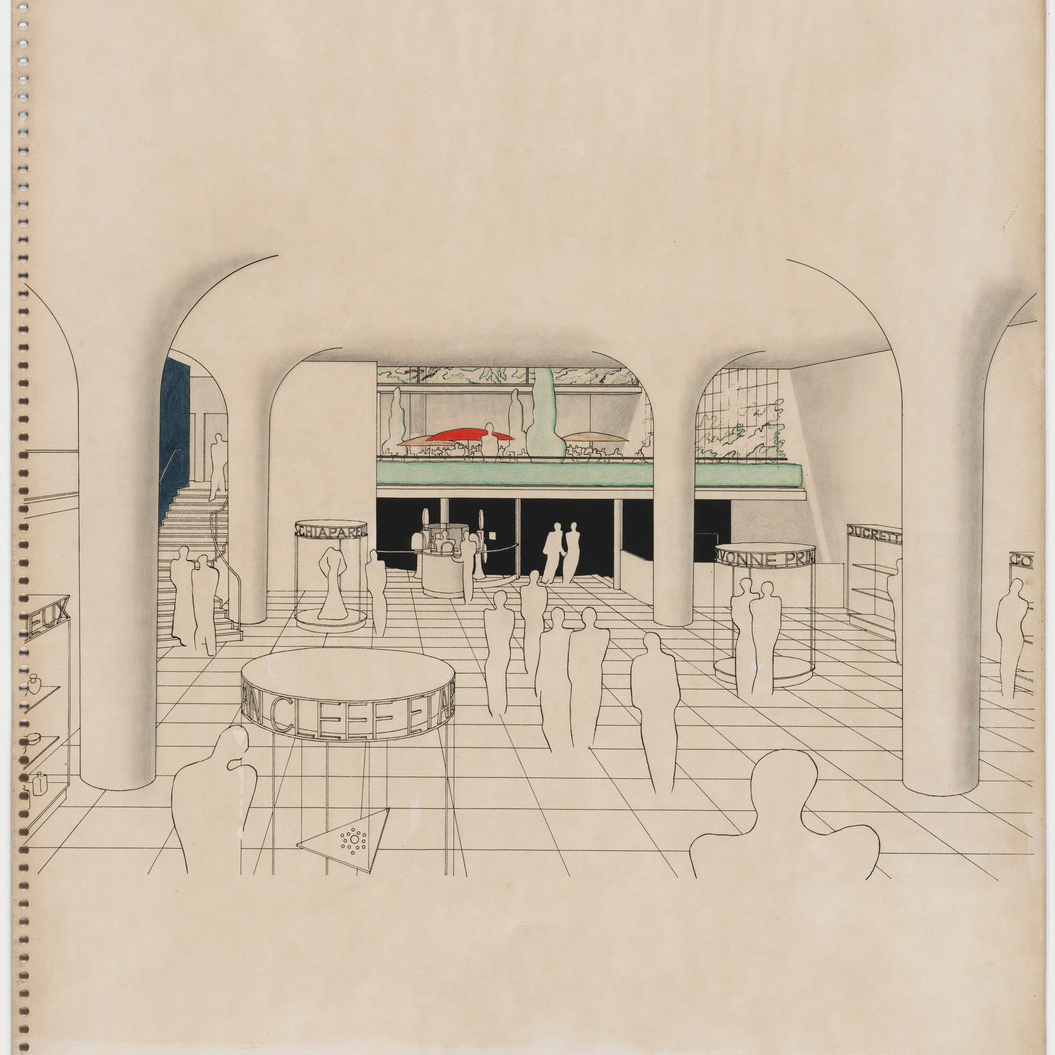“Oscar Nitzchke’s project Maison de la Publicité had envisioned a multimedia facade using photomontage to evoke a screen composed of a continuously changing arrangement of moving and still images, advertisements, and slogans, signs, and shapes in various colors. Nitzchke juxtaposed the contrasting particulate qualities of different types of printed matter to subtly mark the difference between media-the evident grain of a black-and-white print evoked a newsreel, while a smoothly tinted image indicated a billboards advertisement on the night. Nitzchke’s montage identified the facade with the frame of an intermedial screen, a scrim that veiled the interior from the space occupied by the spectator while pointing to the work taking place within.“
“El proyecto de Oscar Nitzchke, Maison de la Publicité imaginaba una fachada multimedia usando el fotomontaje que evocaba una pantalla compuesta por una serie de imagenes, anuncios, eslóganes y señales, estáticas y en movimiento que estaban cambiando continuamente y tenían diferentes formas y colores. Nitzchke yustaponía el contraste de las partículas de las distintas impresiones para marcar sutilmente la diferencia entre los distintos medios: el evidente grano de una impresión en blanco y negro evocaba un noticiero, mientras que una imagen suavemente teñida indicaba un anuncio publicitario en la noche. El montaje de Nitzchke identificó la fachada con el marco de una pantalla intermedia, una malla que ocultaba el interior del espacio ocupado por el espectador mientras señalaba el trabajo que se realizaba en su interior.”
Buckley, Craig (2018). Graphic Assembly Montage, Media, and Experimental Architecture in the 1960s
